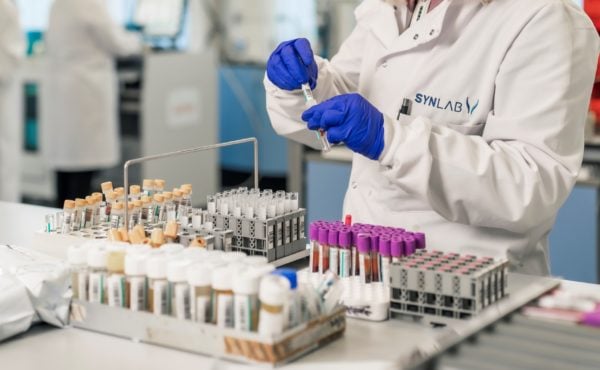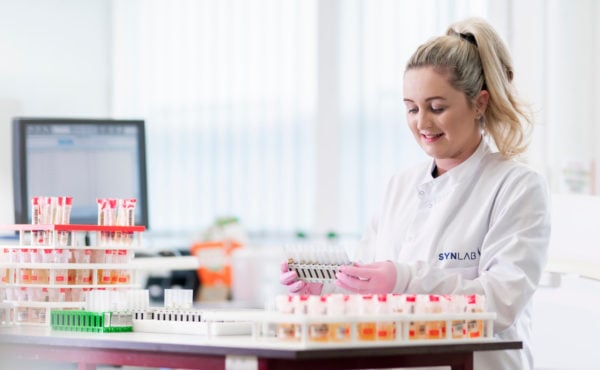Published: 8th August 2024 - All information correct at time of publication.

Prevalence of drugs in the UK
Determining drug prevalence can be difficult because there is not a single dataset that covers over the counter, prescription and illicit drugs. Also by their very nature, the data on illicit drugs is more difficult to obtain. However, it is important to be able to identify the most prevalent drugs so when testing profiles and training are implemented, it is tailored for the needs of the UK population.
This blog summarises the prevalence of drugs in the UK in 2023-24 using information from a variety of sources, including the Global Drug Survey, the Crime Survey of England & Wales 2023, NHS England prescribing data and SYNLAB’s own data. It is intended to be used as an overview for company drug and alcohol policy review and to facilitate drug testing in the workplace.
Amphetamine
Most amphetamine use in the UK is from the use of prescription drugs, with many of the 100 or so positives we have detected in the last year being due to Elvanse; an ADHD medication. Historically, amphetamine was the principal stimulant drug in the UK but this place has been surrendered to the more widely available cocaine.
Benzodiazepines
Benzodiazepines are used primarily as sedatives and anxiety medication and around 1.4 million people in the UK are prescribed benzodiazepines each year. The most common benzodiazepine in the UK is diazepam, with over 4 million prescriptions per year. Benzodiazepines are one of the biggest problem drug areas in Scotland, with 5% of the population prescribed benzodiazepines.
Barbiturates
Barbiturates were most prevalent in the 1950s and 1960s. However, the advent of safer drugs (principally the benzodiazepines) has reduced the prevalence of barbiturates. In 2022 there were only 160,000 prescriptions in the UK, 5% less than in 2021.
Cannabis
Cannabis is the most prevalent illicit drug in the UK and has been for many years. Lifetime use is around 30%, much higher than any other drug. However, in the last year 7.6% of working age adults (16-59) have used cannabis, rising to 15.4% of young adults (16-24). One third of cannabis users used cannabis more than once per month whereas half of young users used cannabis only once or twice.
Approximately 2.3% of the population were reported as showing signs of dependence on cannabis alone.
Cocaine
The prevalence of cocaine is lower than cannabis, with 2.4% of all adults and 5.1% of young adults having used cocaine in the last year. With the exception of households earning less than £10,400 per year, the prevalence of cocaine increases with household income. Powder cocaine (2.4%) is more common than crack cocaine (0.1%) which tends to be found in the same demographic groups as heroin users.
Ecstasy
Ecstasy (MDMA) use has remained consistently around 2% for the last 20 years with two thirds of ecstasy users being under 25. With only six positive results in the last year at SYNLAB Laboratory Services, this suggests that ecstasy users do not fit the demographic of safety critical workers.
Heroin
Heroin use is thankfully rare in the people who are likely to be in safety critical work and, therefore, subject to drug testing. At less than 0.1% of the population, there are around 150,000 opiate users in treatment with perhaps the same again not in treatment. Unlike cannabis, these are generally older users who started their heroin use in the 1980s and 1990s. However, with more than 1000 young adults in treatment this cannot be considered only a drug from the past.
Ketamine
There is always a part of the population that wants to use hallucinogenic drugs. The best known of these are LSD and magic mushrooms but the drug with the higher prevalence is ketamine with 3.8% of young adults using ketamine in the last year. This places it third behind cannabis and cocaine and above ecstasy. With around 30 positive results in the last year this shows that.
Methadone and buprenorphine
These two drugs have been placed together as they serve the same purpose and are generally prescribed to the same group of patients. Both are predominantly used as maintenance and detox treatments for heroin users, although buprenorphine is also used as a painkilling patch. Over 1.8 million methadone prescriptions were made in 2022 and there were over 30,000 people in opiate treatment in Scotland prescribed these drugs in 2023-24.
Although prevalence of these drugs is much lower than many of the other drugs on this list, it is important to test for both.
Opiates
Opiates include all preparations of codeine, dihydrocodeine and morphine as well as illicit heroin and opium based medicines. Opiates are the single biggest drug test performed at SYNLAB Laboratory Services, with about 30% confirmations. Codeine is available both on prescription and over the counter with over 23 million prescriptions in England in 2023 and around 800 million individual tablets sold per year in the UK.
Propoxyphene
Propoxyphene is an opiate painkiller usually co-prescribed with paracetamol. Described as the “worst drug in history”1, propoxyphene sale was banned in the UK in 2006 due to its high overdose risk. It has only remained in most drug testing panels as it was included on the Network Rail panel until 2023. At SYNLAB Laboratory Services, we haven’t had propoxyphene positive results for many years.
Tramadol
Tramadol is an opiate painkiller available on prescription only. Its use varies between regions, with North East England having a prescription rate nearly double the average of the rest of England. The rate in Wales is around one third higher than the English national average. The regional variation is more marked in England with the lowest prescription rates being 200 doses per thousand patients with the highest being 1,200 doses per thousand patients.
Z drugs are used for similar indications as benzodiazepines but are slightly newer and safer. There are around one million people on Z drugs (zopiclone, zolpidem and zaleplon) but US data shows the incidence of abuse of Z drugs was only one quarter that of benzodiazepines.
Spice
The incidence of synthetic cannabinoids in the UK grabs the TV headlines, however, the lifetime prevalence of these drugs is around 0.1 – 0.2% in young adults and use tends to be mostly confined to the prison population and rough sleepers.
Fentanyl, oxycodone and synthetic opioids
These drugs have hit the headlines in the US but are less of a problem in the UK. Although oxycodone prescriptions are increasing in people with chronic pain, the easier availability of codeine perhaps reduces the illicit use. Fentanyl and other synthetic opioids are an increasing problem but this appears mostly confirmed to the same demographic groups as spice and heroin.
For more information on the drugs we can test for as part of a workplace testing program, please click here:
References:
Published 08/06/24. All information correct at time of publication.
Written by Dr. Richard Evers
SYNLAB Laboratory Services
Richard Evers | Research and Development Manager
Richard trained as a biomedical scientist at the Dudley Group of Hospitals and moved to Bethlem Royal Hospital in 2001 after completing a Masters in Analytical Chemistry and began specialising in toxicology.
He moved to King’s College Hospital in 2006 where he developed an automated LCMS method for drugs of abuse as part of a Professional Doctorate in Biomedical Science (DBMS) through the University of Portsmouth.
Richard joined SYNLAB Laboratory Services in 2010 where he has worked in management for both the toxicology and reporting scientist teams before moving into his current role as research and development manager. Richard is responsible for overseeing all method and development activities in toxicology.





